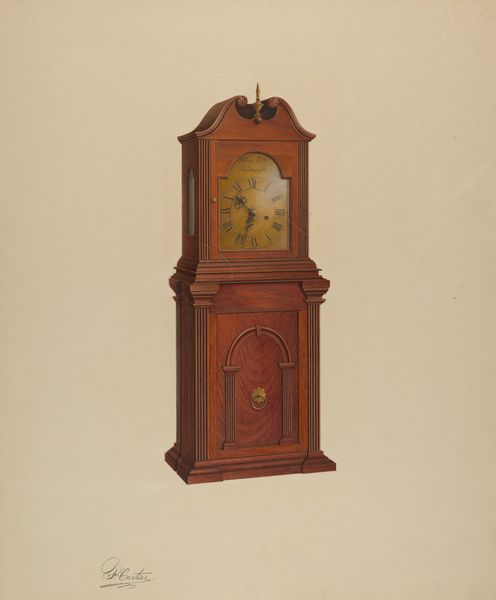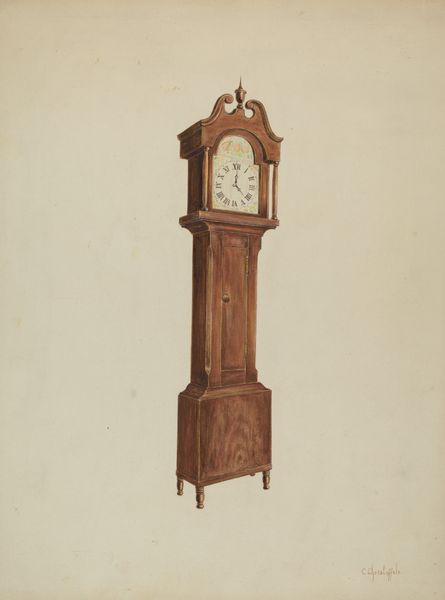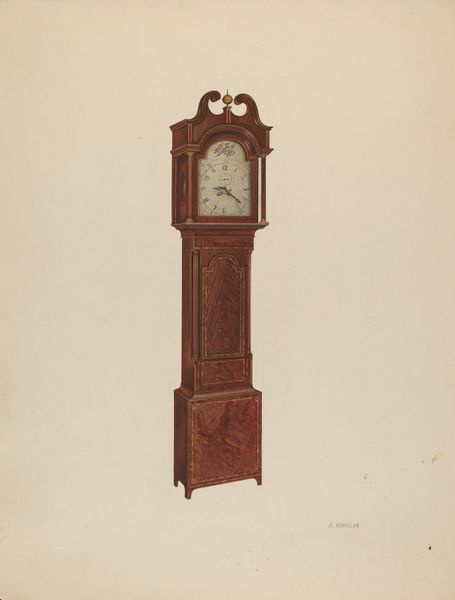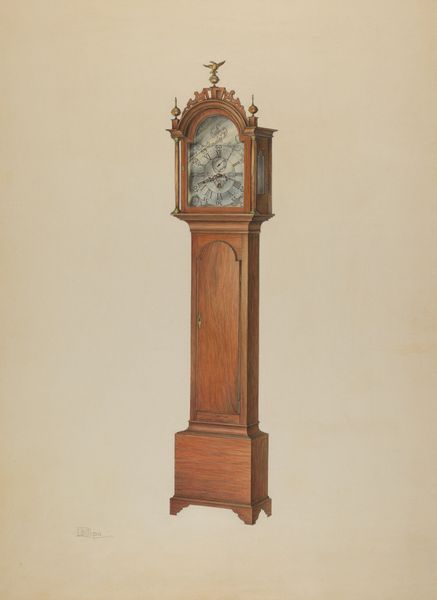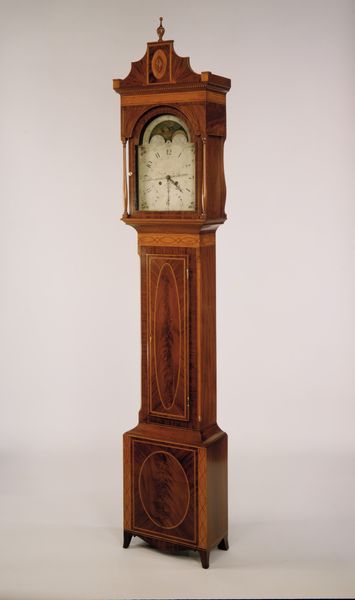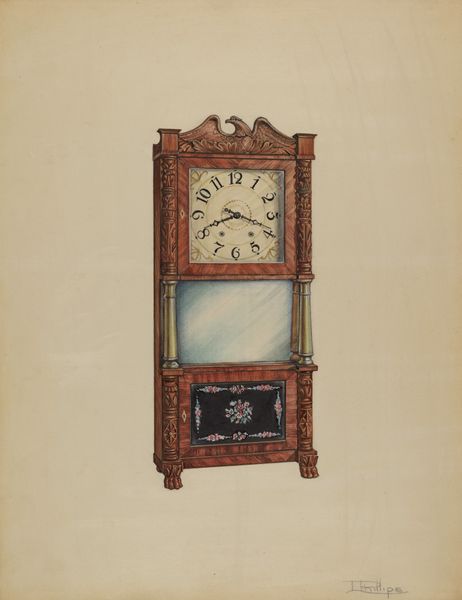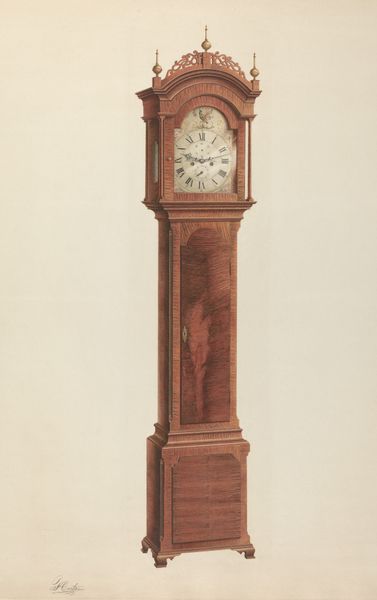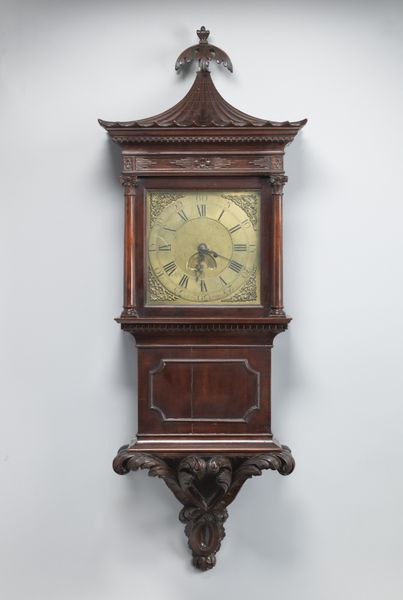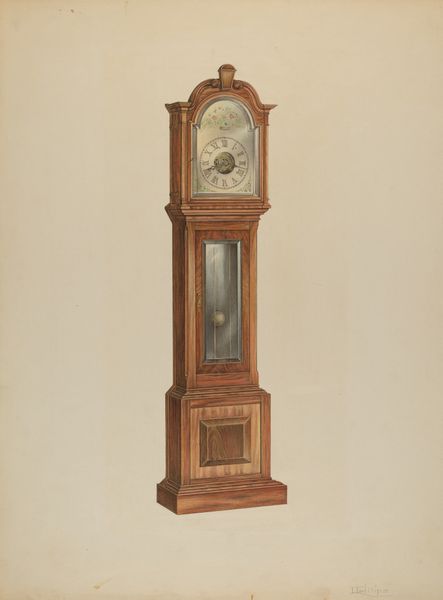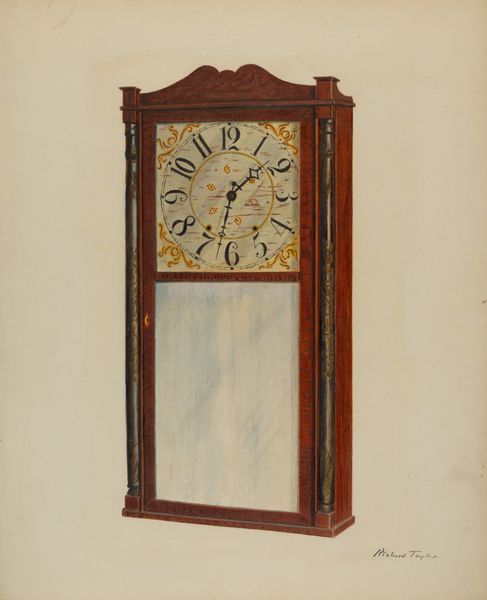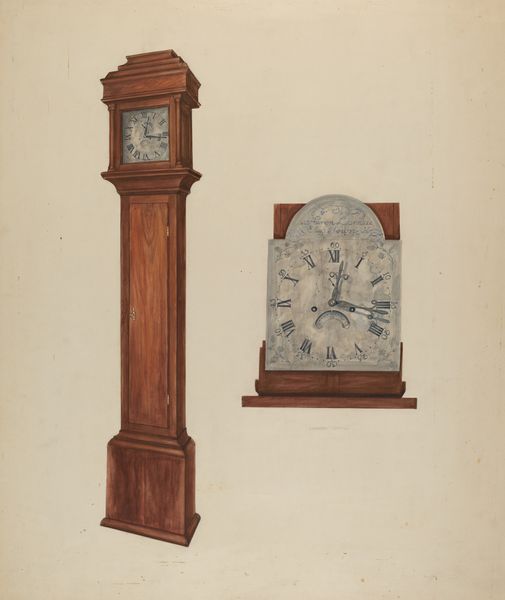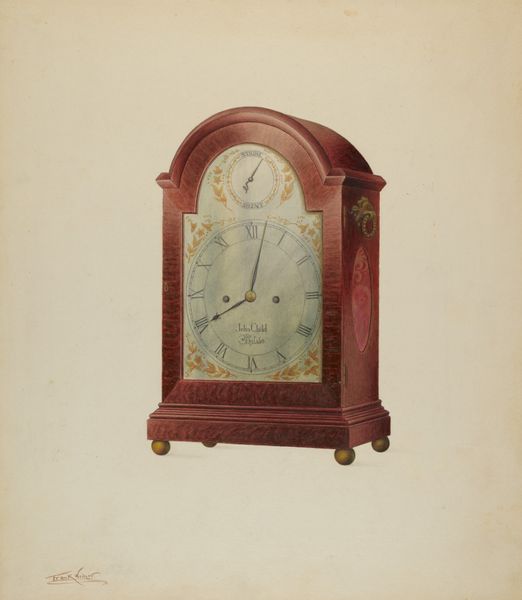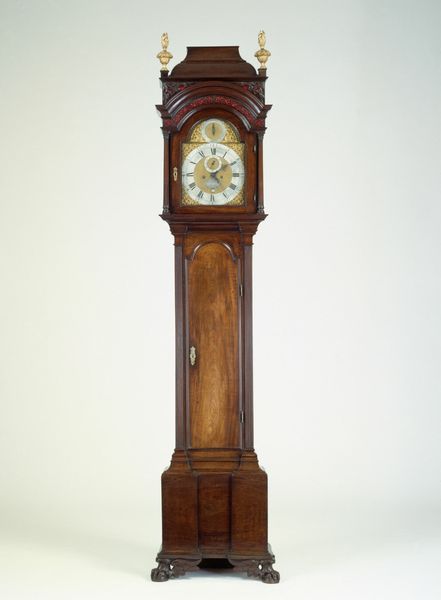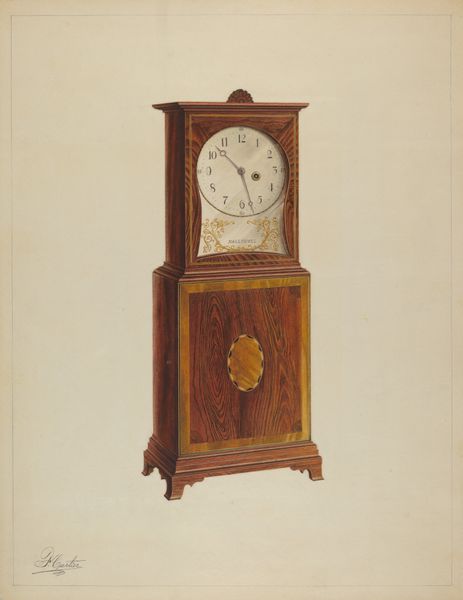
drawing, painting, watercolor
#
drawing
#
painting
#
watercolor
#
academic-art
#
watercolor
Dimensions: overall: 31.8 x 24.4 cm (12 1/2 x 9 5/8 in.) Original IAD Object: Approximately 40"high
Copyright: National Gallery of Art: CC0 1.0
Editor: This is Albert Gold’s "Hall Clock (Miniature)" from around 1936, done with watercolor, painting, and drawing techniques. It’s interesting how much detail is packed into such a small rendering; it almost looks like a product design sketch. What stands out to you when you look at this piece? Curator: It's precisely this intersection of ‘art’ and ‘design’ that captivates me. Consider the watercolor medium – often associated with delicate landscapes or portraiture. Here, it is employed to meticulously render a mass-produced object, the hall clock. I'm curious, what social function did the mass-produced clock serve at that time, and does the artist reinforce, or critique, that functionality here? Editor: I guess mass production made timekeeping accessible to more people, and clocks became household objects. I don’t see an obvious critique, but the ‘miniature’ aspect could hint at issues with accessibility of goods during that time... maybe as a reminder of luxury for those who couldn’t afford it. Curator: Exactly. We have a depiction that exists removed from functional utility by existing as an artistic representation in watercolor. By painstakingly rendering an object that symbolises the increasingly mechanised and measured nature of modern life through a slower, hand-rendered mode of production, Gold invites us to contemplate the relationship between labor, commodity, and the human touch. This "Hall Clock" is a fascinating case study in the industrialization of daily life. Notice how much surface variation exists in what should, logically, be a pristine, identical surface of repeated furniture manufacturing. Editor: I see what you mean. Focusing on the methods and the materials makes me think about this clock in a completely new way – as an object representing its specific time. Thank you! Curator: My pleasure! Considering art from the lens of its materiality always uncovers new meanings.
Comments
No comments
Be the first to comment and join the conversation on the ultimate creative platform.
